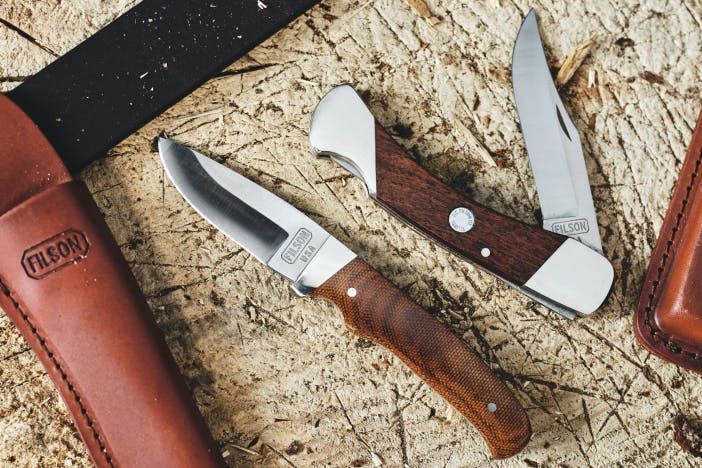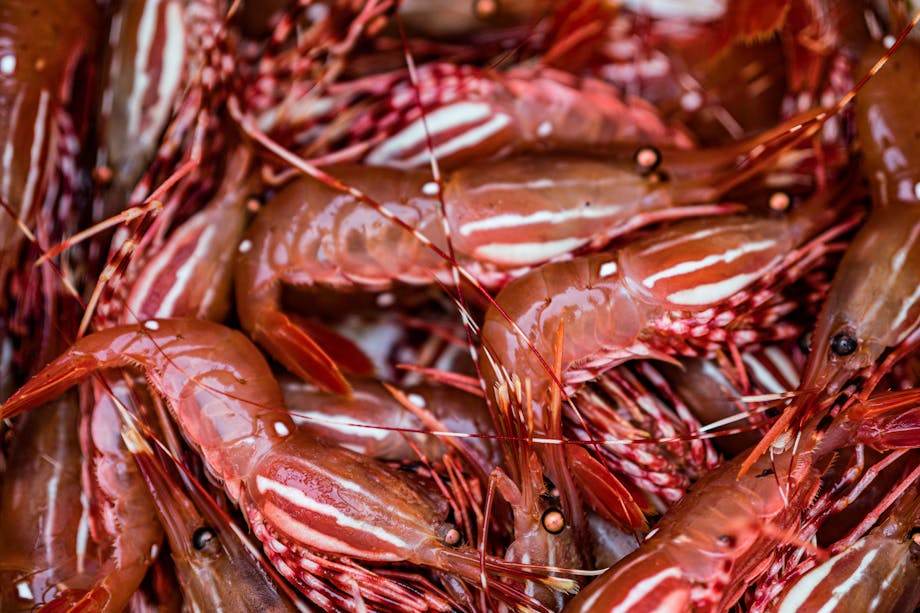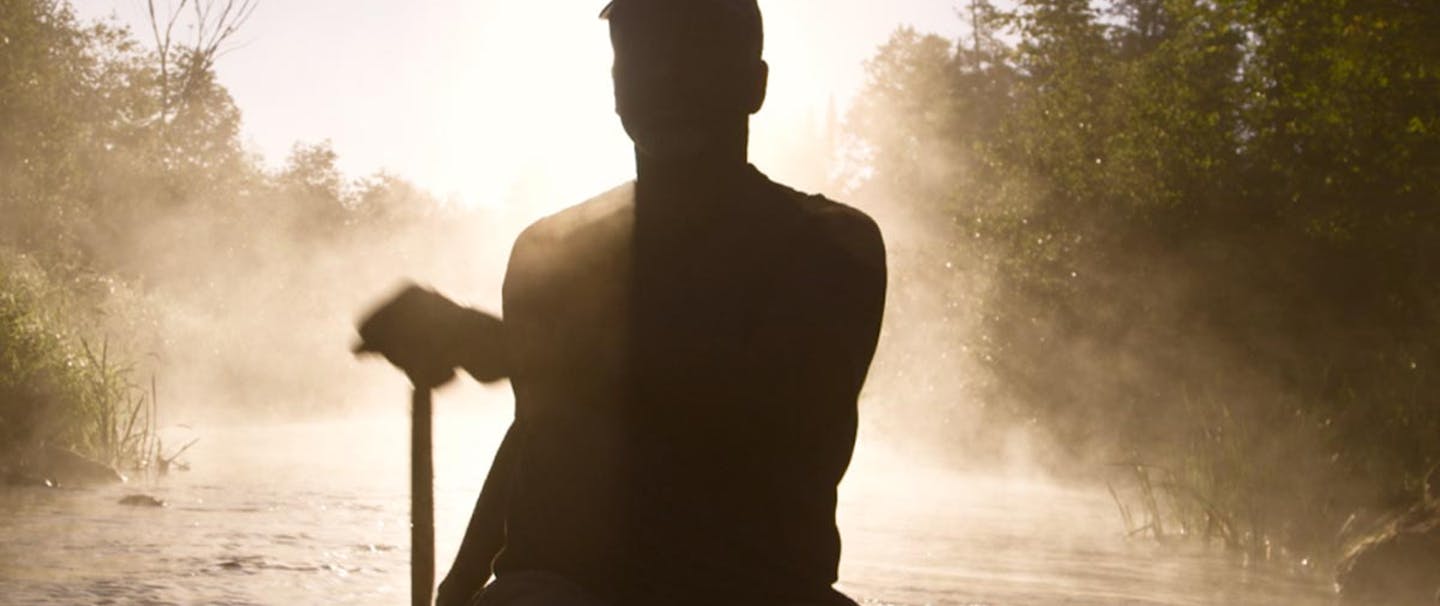Finding wild asparagus really starts in the fall hunting season, when that year’s asparagus stalks are 3–4 feet high and have turned a yellowish black. Because asparagus is a perennial and because the tender young shoots are hard to find unless you know where to look, locating the fully grown stalks from the previous spring is the best place to start.
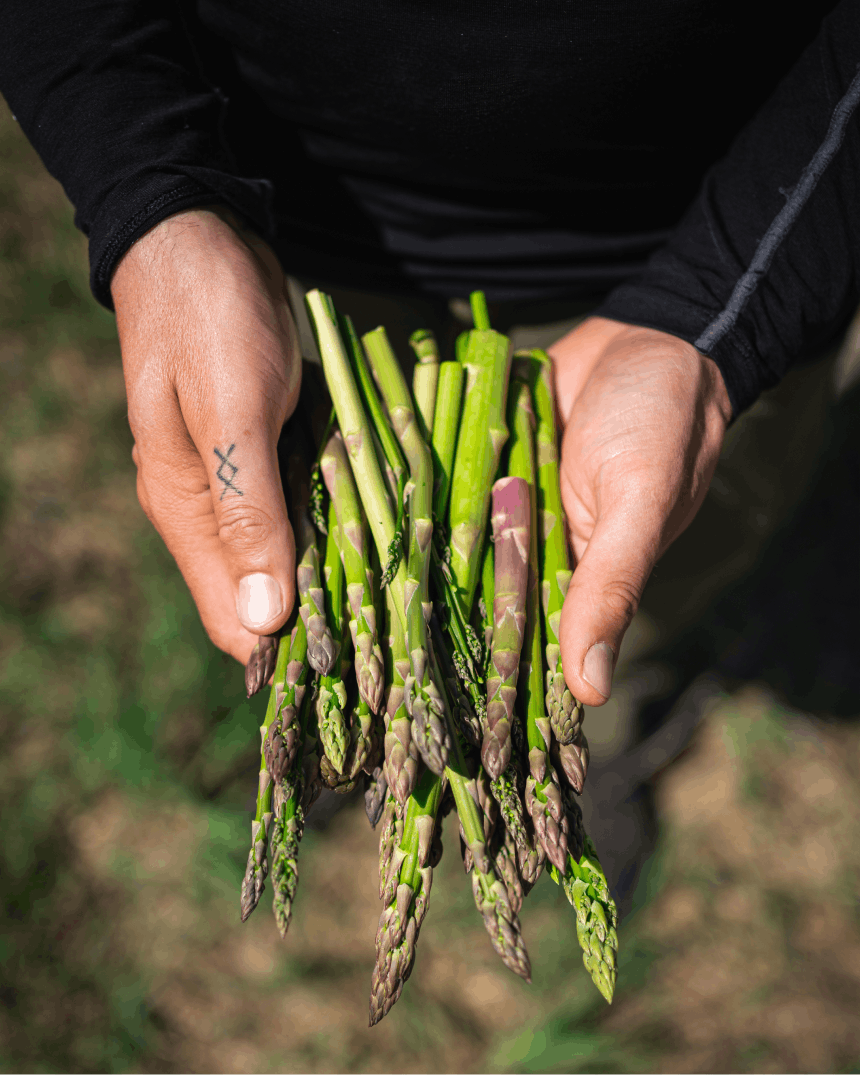
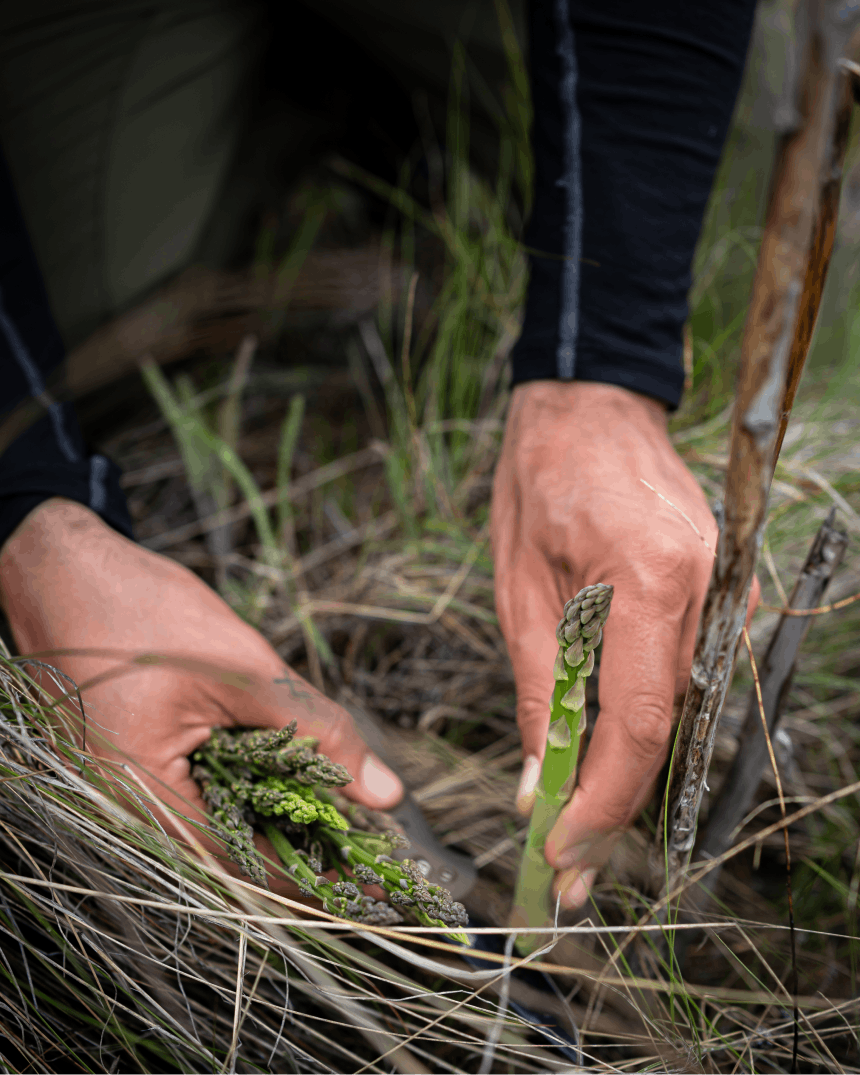
Wild baby asparagus shoots (left) are easiest to find near the roots of the previous season's yellowish overgrown stalks (right).
Asparagus likes full sun and grows in moist but not wet soil. Because asparagus isn’t native to North America, what you will be harvesting is actually feral asparagus that has escaped from gardens. A good place to start is on the grassy sides of roadways where homes aren’t far away. Taste-wise it is similar to what you find in the grocery store, however wild asparagus tends to be much sweeter and more tender. Timing will vary greatly, depending on where you are located on the continent. In central British Columbia asparagus season can start the last week of April and run for 2–3 weeks before the stalks are too big and woody to be good table fare.
One note on harvesting asparagus: to ensure there is some for the following year, always leave a couple of stalks in every cluster to allow them to go to seed. I learned about wild spring onions a number of years ago, from an old cowgirl. She told me a story about going for a ride and taking a break on a sunny, sparsely treed hill. As she grabbed the horse’s reins she was perplexed to find that her horse’s breath smelled liked onions. She had unknowingly stopped for a break on a hillside covered in spring onions.
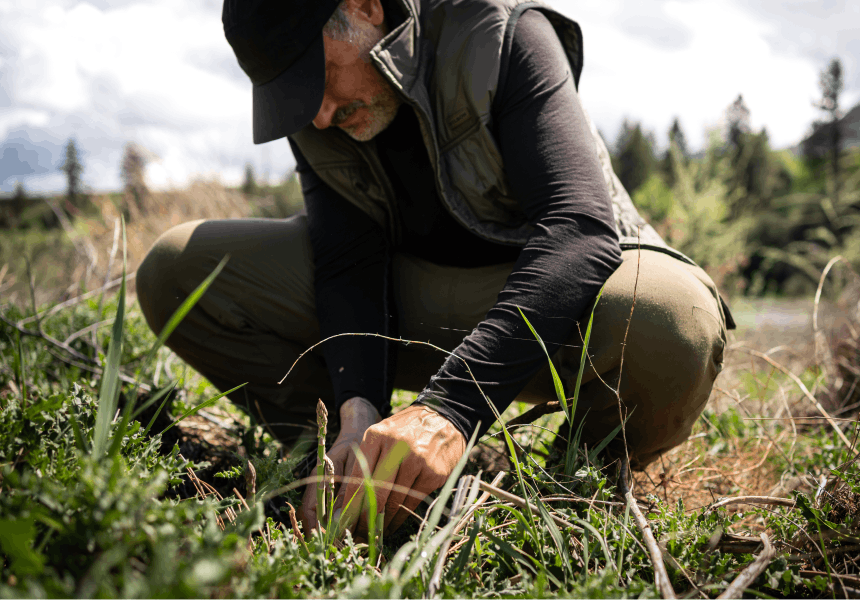
Spring onions are truly wild and much more abundant than asparagus. They can be found in drier climates in open clearings and among sparsely treed Douglas Fir forests. The challenge is that the green onion shoots often look just like grass. Look for clumps of 4–6 green cupped or folded shoots that all meet together where they come out of the ground. Use your fingers or a knife to dig out the root slightly before pulling them out as a whole cluster. Once you get an eye for them you will notice them absolutely everywhere.
Clean the onions by remove the dirty layers around the bulb and trim off the roots. Do not remove the white bulb—that is one of the best parts. Both of these edibles can be cooked the same way you would treat the commercial varieties. If anything, cook them lightly to showcase the great flavor and texture of wild foods. And of course, any wild food tastes better when cooked and consumed in the place you harvested it—cook in the field if you can!
Makes approximately 2 servings.

Pork Shoulder Steaks
4 Pork shoulder steaks
8 Cloves garlic, rough chopped
8 Sprigs oregano, plucked and roughly chopped
1 Lemon, zested
3 Tbsp Oil
Seasoning salt
Wild Asparagus & Spring Onion Side
24 Spears wild asparagus
6–8 Spring onions, cleaned
6 Strips bacon, 1” diced
1 Lemon
Seasoning salt
Parmesan
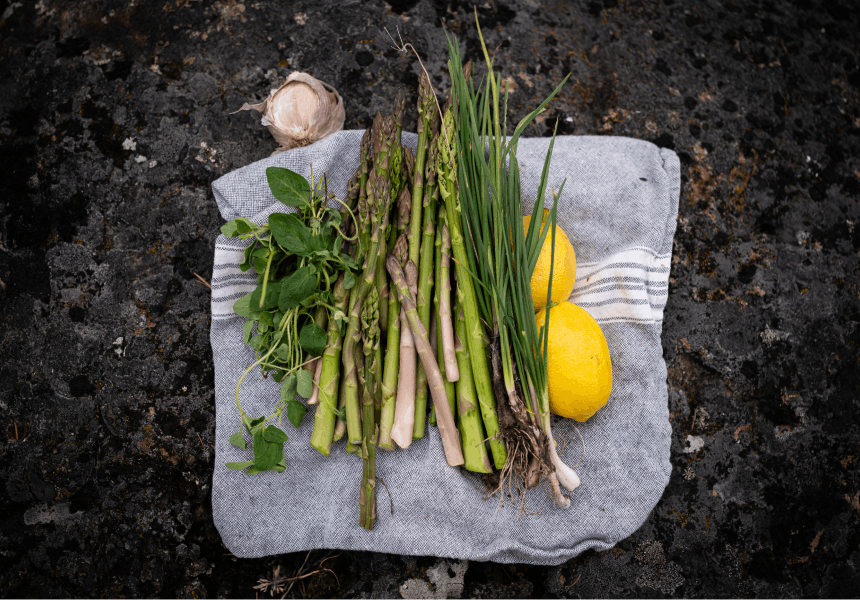
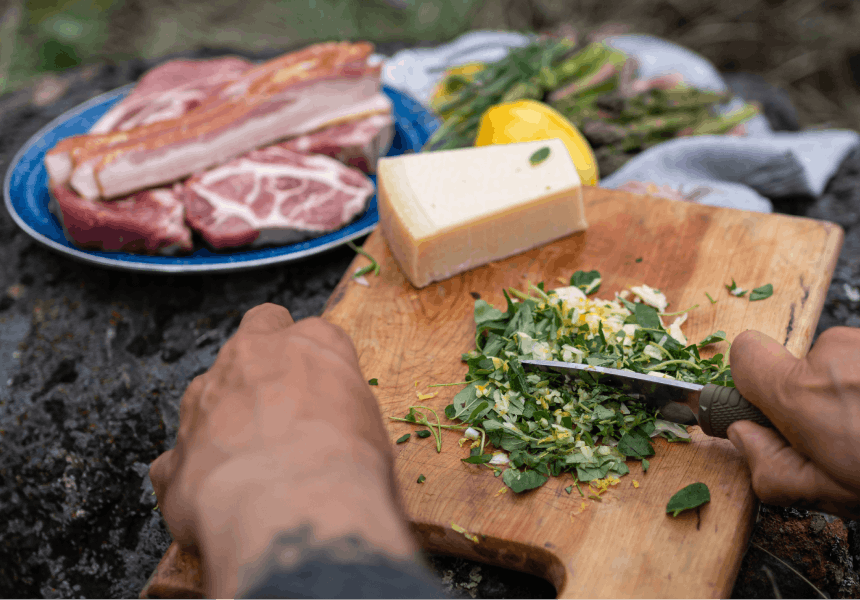

Pork Shoulder Steaks
1. Massage the garlic, oregano, lemon, and oil into the pork steaks.
2. Season generously with seasoning salt.
3. Grill the steaks over medium-high heat to your desired temperature.
4. Allow the steaks to rest for 5 minutes in a warm place.
5. Reheat the steaks just prior to serving.
Wild Asparagus & Spring Onion Side
1. Halve the lemon through the equator and grill over high heat until charred on the cut side, approximately 4–6 minutes.
2. Crisp the bacon in a pan.
3. Grill the spring onions over medium-high heat in a bunch until the bottom stalks just start to char, approximately 1 minute.
4. Flip the entire bunch of onions over and repeat on the other side. The end result should be slightly wilted greens with some charring.
5. Cut the onions into 1” pieces and add them to the pan with the bacon.
6. Repeat the same grilling process with the asparagus for about 1–1½ minutes per side.
7. Cut the asparagus spears into 2” sections and add to the pan.
8. Toss the mixture to coat with bacon grease and season with the seasoning salt and the juice from half a grilled lemon.
9. Plate the asparagus and shave parmesan over the top.
10. Finish the entire dish with the juice of the other lemon half.


